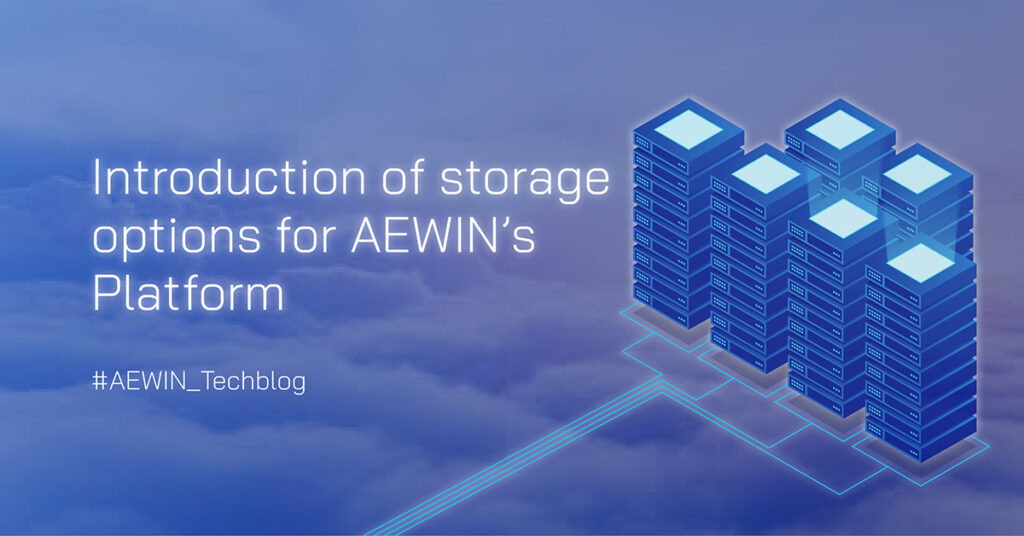
In a server/embedded platform environment, storage devices play a critical role in managing and providing access to vast amounts of data that servers need to store and retrieve. The selection of storage devices in a server setup is crucial for achieving optimal performance, reliability, and scalability. Here’s an introduction to common storage options in current standard AEWIN platforms.
Table1. Comparison of storage interfaces
| Storage Interface |
SATA |
SAS |
NVMe |
| Form Factor |
2.5”
mSATA
M.2 |
2.5” |
M.2
U.2 |
| Data Transfer Rates |
SATA 3.0: 600 MB/s |
SAS 3.0: 12 Gbps
SAS4.0: 22.5 Gbps |
PCIe3.0: 1 GB/s per lane
PCIe4.0: 2 GB/s per lane |
| Feature |
Cost-effective |
Reliability |
Low Latency
High Throughput
Excellent Scalability |
There are three main interfaces/protocol of storages in AEWIN Server.
SATA, Serial ATA
Serial AT Attachment, SATA, is a computer bus interface that connects host bus adapters to mass storage devices. It is a widely used interface for connecting hard disk drives (HDDs) and solid-state drives (SSDs) to servers. It is a cost-effective solution suitable for most applications with moderate performance requirements. SATA interfaces are commonly found in servers and storage systems.
SAS, Serial Attached SCSI
Serial Attached SCSI, SAS, is a point-to-point serial protocol that transfer data to and from computer-storage devices. SAS error-recovery and error-reporting uses SCSI commands, which have more functionality than the ATA commands used by SATA drives. SAS is commonly used in mission-critical applications where speed and reliability are paramount.
NVMe, Non-Volatile Memory Express
Non-Volatile Memory Express or NVM Express, NVMe, is a storage interface specifically designed for modern, high-performance solid-state drives (SSDs). It is a protocol that leverages PCIe to provide direct communication between the storage device and the server’s CPU, reducing latency and improving overall performance.
Various kinds of form factors for each storage interfaces have been listed in table1 listed above. Each form factor has its own advantages and is suitable for specific use cases. For example, HDD is applied to achieve high capacity with the best TOC. As for mSATA and M.2, they are suitable for compact systems (further details of the dimension can be found in table2 below. U.2, with its compatibility with 2.5-inch bays, is often used in enterprise environments where high-performance, hot-swappable storage is essential.
Table2. Reference dimensions of storage devices with different form factors
| Form Factor |
2.5” |
3.5” |
mSATA |
M.2 |
U.2 |
| Length (mm) |
100 |
147 |
50.8 |
80 |
100.35 |
| Width (mm) |
69.85 |
102 |
29.85 |
22 |
69.85 |
| Height (mm) |
7-15 |
26 |
4.85 |
3.5 |
7-15 |
Summary
As a Network Appliance provider, AEWIN designs platforms with great flexibility for installing a variety of the storage devices per customer’s requirements. Selected based on the features including speed/scalability/cost/dimension mentioned in this article, the most suitable storage options can be installed in AEWIN system for the best TCO.